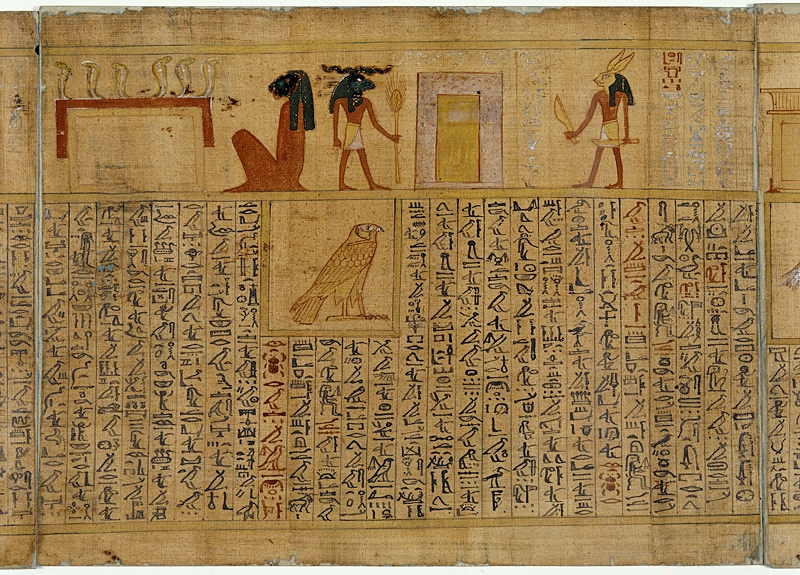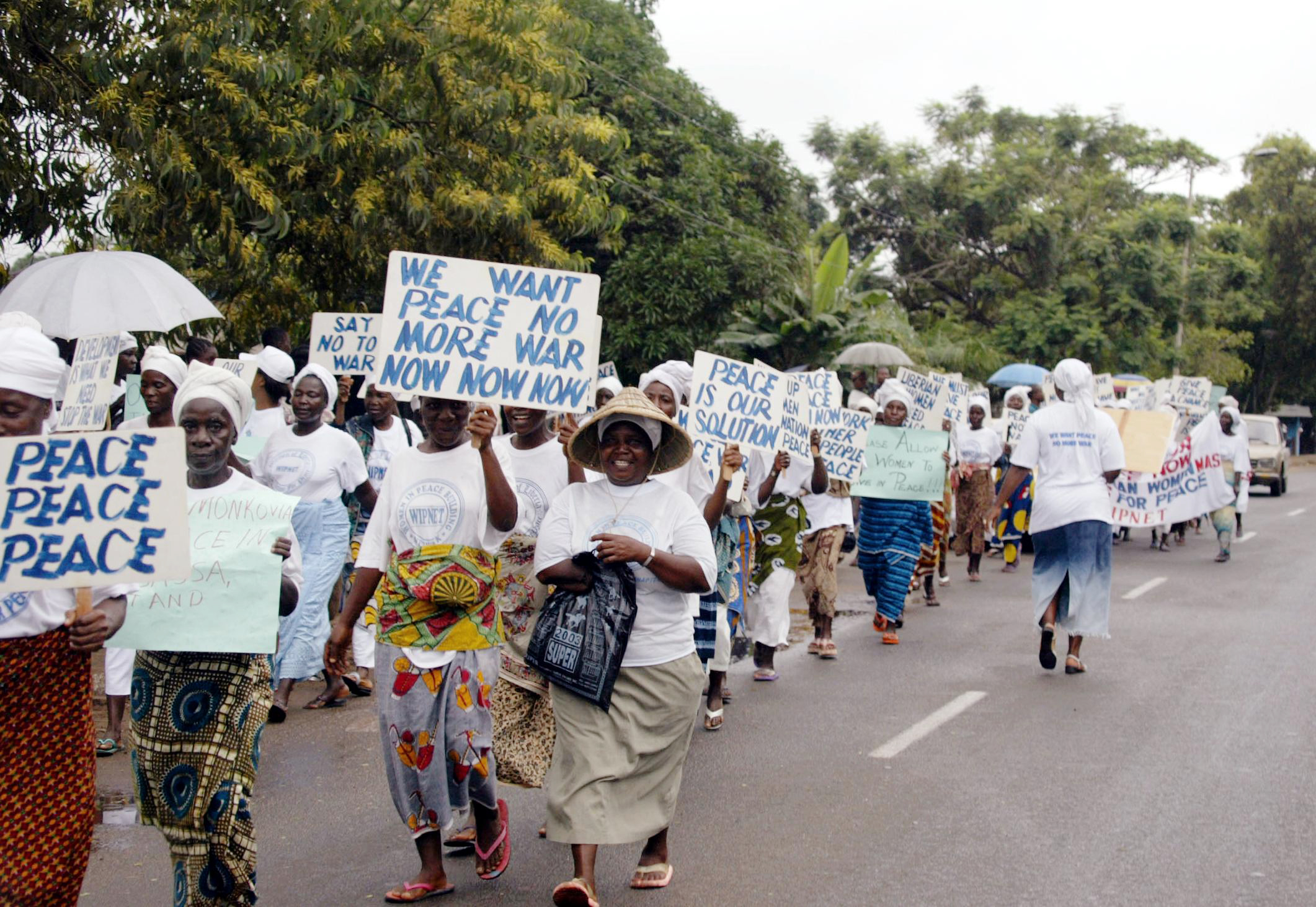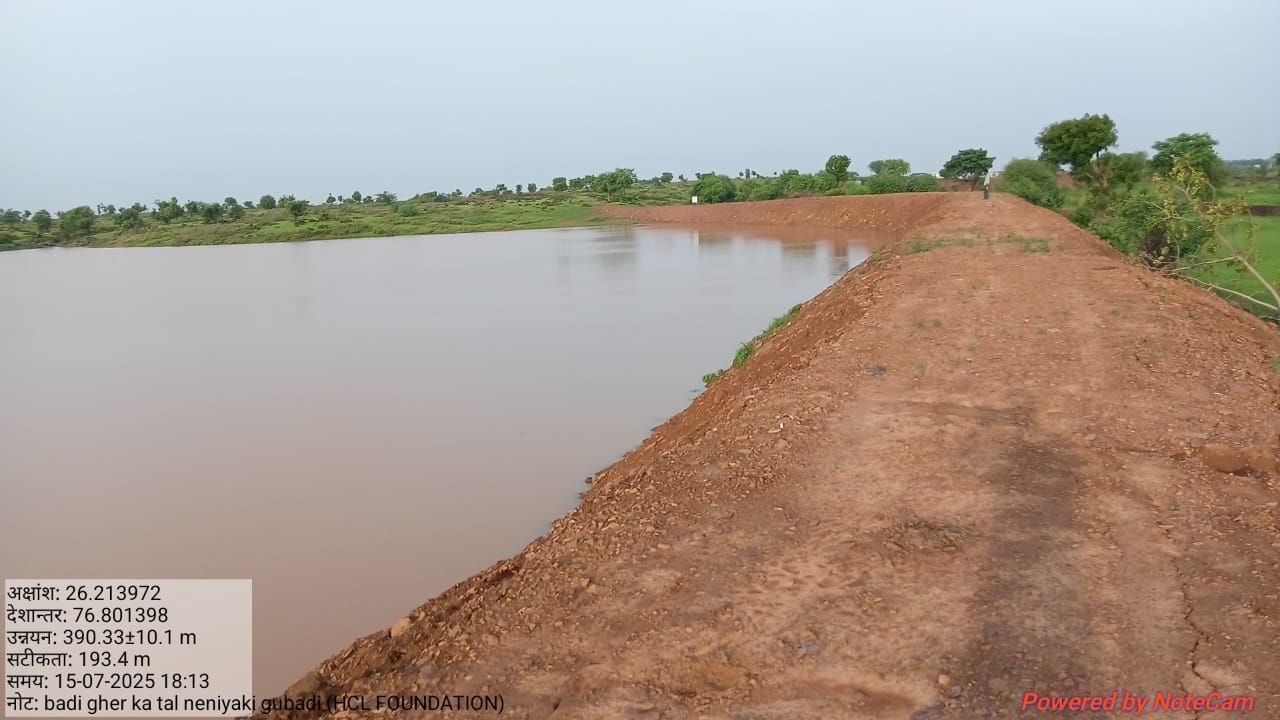When are we better together?
underline
International development strategies are often framed as a means of sharing the benefits of modern life and reducing human suffering. Over the past seventy years, international bodies such as the IMF and the World Bank, working alongside governments, NGOs, and the private sector, have invested heavily in helping poorer communities attain a standard of living similar to that achieved in the West. While these efforts reflect a genuine aspiration to extend prosperity more widely, they have often focused on improving material living conditions without fully addressing the underlying dynamics that perpetuate poverty—or the potential consequences such approaches may have for the climate and environment.
This post approaches international development from the perspective of risk, drawing attention to the boundaries that enable agents to develop meaningful risk-taking and risk-sharing strategies to address uncertainties effectively. To explore these ideas, I will first explain why it is useful to conceptualize risk in a social context. I will then examine how social subsystems both enable and encourage agents to take risks while limiting the burden of those risks within any given subsystem. Finally, I will analyze international development through the lens of risk, distinguishing between effective and destructive forms of risk-taking and risk-sharing in this context.
end of box
Risk and Surprise Minimization
underline
Socially organized humans strive to make their environments as stable and predictable as possible by developing awareness of the causes of uncertainty and unpredictability. To mitigate uncertainties, agents organize and agree on which uncertainties to address and on the most effective ways to do so. Risk, therefore, is not the uncertainty itself but the methods of proactively and collectively addressing and mitigating it. It is a concept that arises from—and is meaningful only within—the context of socially constructed subsystems.
Mitigating uncertainties in the social context reveals the function of social subsystems: making collective assumptions about the causal structure of the “world out there” as a preliminary step toward planning for the future and de-risking the social environment. As a concept, risk can be broken down into two components: the likelihood of a future event and its potential consequences.
Importantly, risk is often coupled with benefits—subsystems are designed to make it easier for agents to take calculated risks that may lead to unexpected but welcome outcomes, improving quality of life and strengthening the resilience of both the subsystem and the agents it seeks to protect. In the Free Energy Principle, the term risk resonates with epistemic foraging—a process by which agents engage in exploratory behaviors to minimize uncertainty about their internal models of the environment.
Subsystems not only enable agents to take risks; they also constrain risk-taking initiatives to those that yield proportional and necessary benefits. Moreover, to protect the subsystem and its members, risk-taking is often decoupled from risk-sharing: the latter is borne by each member of the subsystem in proportion to their resources, while individual risk-takers bear both the rewards of their successes and the burdens of their failures.
Risk-sharing strategies reveal how agents understand their environment from within the subsystems they inhabit. Nested subsystems disclose the evolution of collective environmental modeling, as well as the delicate boundaries that both constrain and enable the development of risk-sharing and benefit-distribution mechanisms. While each nested subsystem manages its own risks, the risk-sharing strategy of the subsystem at the top of the hierarchy determines society’s overall capacity to control its environment and to respond effectively to change.
In the following paragraphs, I will outline—broadly and linearly—the messy and interconnected development of risk-sharing methods in the different subsystems that compose our current societies. I will then address the challenges these strategies, and their evolution, pose to the ability of societies to cohere and persist over time. For the sake of clarity, the term policy selection methods refers to the processes by which agents in subsystems identify and weigh uncertainties, as well as the risk-sharing, risk-taking, and benefit-distribution methods devised to address them.
end of box

Nested Risk-Sharing Strategies
underline
The most persistent subsystem developed by socially organized humans is the family. Families provide care for dependent members—young children, the elderly, and the sick. Families aim to secure the energy needed to sustain caregiving activities, alongside the duty to prepare young dependents to eventually take on caregiving roles themselves. The benefits of being part of a family include increasing the likelihood of being cared for in old age and improving the chances of continuity beyond one’s own lifetime. While parents are the primary risk-takers in such subsystems, risk is shared among adult family members—and gradually by their children as they grow older.
While all societies depend on children becoming adults, families as subsystems are notoriously vulnerable. A chronically ill member, an accident, a famine, or other shocks can overwhelm their resilience. To support families in securing the energy needed for caregiving, socially organized humans constructed the notion of the tribe—a subsystem that, while coarse-graining care functions, strengthens families’ capacity to withstand and mitigate risk.
Tribes were originally mobile congregations of families who shared physical proximity and developed risk-sharing and benefit-distribution mechanisms to improve collective survival. They used social mechanisms to mobilize members to act for the greater good of the tribe, even at the expense of resources that would otherwise be devoted to their families. Risks and benefits are interdependent: Becoming better hunters yields more food to share; building ties with other tribes secures access to grazing lands and water; defending people and resources builds a reputation as formidable fighters.
Although joining a tribe reduced families’ degrees of freedom, it improved their chances of survival and prosperity. For tribes to succeed—that is, to persist—loyalty to the tribe’s policy selection methods had to outweigh both family obligations and alliances with other tribes. Inequality begins here: some members excelled at hunting, others at securing resources, while some families needed more support.
Loyalty to the tribe reduced the likelihood that successful hunters would hoard food for their families instead of sharing it. Benefit-distribution mechanisms increased the chances that tribe members would gain privileges, whether or not they had taken the risks required to secure them. To sustain commitment, tribes had to make membership worthwhile—by continually developing their risk-taking and risk-sharing strategies and by recognizing contributions as serving the greater good of the tribe.
end of box

Shared Origin and Destiny
underline
While tribes still exist today, providing support and a sense of belonging to people across the globe, their control over the physical environment is limited, extending mainly to hunting, herding, and small-scale cultivation. As such, tribes often respond to environmental shocks by migrating to greener pastures. To overcome the need for constant migration and adaptation to new environments, socially organized humans loosened their commitment to tribes and began fostering collaboration across several tribes, ultimately constructing the notion of the nation.
By coarse-graining collective survival functions, nations as subsystems strengthened the capacity of tribes and families to establish permanent forms of habitation that could better withstand environmental shocks. Permanent settlement required a larger pool of risk-sharers and risk-takers, along with deeper alignment among loosely connected agents. The construction of nations as subsystems relied on two key developments: a socially constructed affinity to territory (civilizations) and the use of manuscripts.
The affinity between habitats and their inhabitants restricted migration and limited tribal modes of habitation. The transition from oral communication to manuscripts improved coordination among the different tribes and families that “belonged” to a nation, while also making methods of information-sharing independent of living agents. Nations compress, unify, and reshape information about themselves and their environments in order to plan and improve their future. These moves enabled agents not only to shape their environment but also to construct visions of their collective future, thereby materializing territorial affinity.
Risks and benefits remained interdependent but became more abstract compared to those of families and tribes. Taxation and participation in collective defense efforts emerged as central forms of risk-sharing. Risk-takers were rewarded for excelling as traders, conquerors, and administrators, while benefits included the security of permanent habitation, the early provision of public goods, and access to shared resources.
Although joining a nation further reduced the degrees of freedom of families and tribes, it strengthened their ability to defend against enemies and stabilize access to food and trade networks. For nations to succeed—that is, to persist—solidarity among loosely connected families and tribes was necessary, along with adherence to the policy-selection methods developed across the territory.
Inequality not only persisted but also deepened within nations. Prominent members gained not just skills and reputation but enduring, intergenerational advantages—ranging from property and goods to specialized knowledge such as literacy. To sustain commitment, nations framed membership as destiny: a shared origin and a common future. At the same time, risk-sharing and benefit-distribution strategies were presented as serving the greater good of the nation.
end of box

Keeping things together
underline
While nations enabled loosely affiliated families and tribes to cohere around a shared language, culture, and customs—and facilitated significant progress in permanent settlement—they were limited in their ability to unify policy selection methods over large distances and to negotiate and cooperate with other nations.To overcome these limitations, socially organized humans began fostering faith-based forms of collaboration as part of their national strategy, ultimately constructing the notion of organized religions.
Although spirituality and belief systems predated organized religions, the key development was the use of faith-based commitment and obedience to the Gods as a foundation for establishing moral and legal frameworks, legitimizing authority, and providing a collective identity for cooperation between nations. Religions created, legitimized, and enforced man-made policy-selection methods that abstracted the link between decision-making and legitimacy.
While coarse-graining cohabitation activities, religions as subsystems strengthened the capacity of nations, tribes, and families to unify their policy selection methods, turning rules and customs into the enforced Rule of God. Religions’ shared frameworks were crucial for organizing larger societies by providing a basis for trust, responsibility, and a sense of shared purpose.
Religions were also the first subsystems to develop a significant bureaucratic layer. As a result, risks and benefits now included the maintenance and funding of agents who operated and controlled the subsystem, such as clerics and monarchs. Risk-takers were rewarded not only for excelling as traders, conquerors, and administrators, but also—and more importantly—for spreading religious scripts and rules far and wide. Benefits included access to larger pools of resources and expanded economic and political cooperation.
Inequalities persisted, especially through monarchies, which were essentially affluent families taking control of policy selection mechanisms. Prominent members gained not only skills, reputation, and wealth, but also the ability to translate these forms of capital into power that could shape the policies of an entire society. Religions were also the first subsystems to sustain commitment through coercion, including wars and the enforcement of laws.
end of box

The Leviathan
underline
Religions and monarchies controlled the social environment for several millennia. While impressive in their ability to spread and unify agents around a shared sense of reality—with four religions followed by over 70% of the world’s population—religions blurred the distinction between uncertainties originating in the environment and those arising from inefficient policy-selection methods. They regarded every form of adversity as an act of God, an explanation that offered little accountability and paid limited regard to the core function of subsystems: promoting the greater good of societies.
In Free Energy Principle terms, religious scripts were the first to provide a vision of an ideal society from which prediction errors could, in principle, be generated. However, these scripts explained all prediction errors as acts of God, leaving no room for—and even constraining—human agency that sought alternative explanations.
The concept of the Leviathan emerged from what appears to have been a growing realization among agents in the Western hemisphere that, while increasing social complexity required a layer of governance, that governance should operate through a contractual agreement between its members. In this arrangement, agents holding policy-selection power had to be held accountable for their actions and decisions, while members of society had to relinquish the urge to resolve issues independently, often through the use of force.
Nation-states were the first subsystems to explicitly document their break from the previous order through declarations of independence. Every aspect of the subsystem—its inferred boundaries, the methods for identifying members, the Grand Narrative of society, and its policy-selection method (Rule of Law)—became explicit and subject to change. In democratic nation-states especially, the gap between the stated Grand Narrative (vision) and the Rule of Law (policy framework) exposes prediction errors between societal models and the lived experiences of citizens.
While risk-sharing methods still relied on taxation, donations, and volunteering for service, risk-taking methods expanded to include scientific research (previously stifledby religious institutions) and entrepreneurship, which connected advances in science and technology to the wider population. Benefit distribution was formalized through laws and increasingly regarded as legal rights that the state should either actively provide or refrain from interfering with.
Inequalities between and within subsystems reached an all-time high with the rise of nation-states. First, some nations never gained sovereignty over a territory, such as the Palestinians and Kurds. Second, while some nation-states joined the family of nations only in the last century, others had already existed for several centuries. Third, not all members of a given nation-state are able to participate in policy-selection methods—particularly ethnic minorities and tribes living in rural areas. Fourth, low participation in risk-sharing and risk-taking activities, while not a crime, often translates into a limited share of benefits, resulting in poverty. Finally, when a nation-state becomes unsafe due to war or natural disaster, agents may decide to migrate across national borders, which often leads to downward mobility for at least the first generation.
end of box

What can possibly go wrong?
underline
Following this simplified description, I will outline the main challenges that socially organized humans face when addressing uncertainties together.
The first challenge, discussed in a previous post, is boundaries. Without effectively constructed boundaries, agents cannot meaningfully separate their society from its environment and will struggle to minimize uncertainties within their subsystems. The end of the Bretton Woods Agreement is a good example: abandoning the gold standard led to greater volatility in national currencies and increased susceptibility to global market shocks.
Beyond boundaries, for risk-sharing and risk-taking methods to be effective, nested subsystems must align with the policy-selection method at the top of the hierarchy. If a lower subsystem—such as a royal family, a dominant tribe, or an elite—asserts policy-selection power over an entire society, it becomes difficult to frame its methods as serving the greater good. Whether or not the lower subsystem can impose its will, we can expect limited participation in risk-sharing and risk-taking activities, and possibly attempts to forcibly remove it from power. In either case, a lower subsystem usurping control is likely to reduce society’s overall capacity to develop effective policy-selection methods.
Another challenge is the need to identify and weigh uncertainties, and to reach consensus on their sources and how best to mitigate them. Should the climate be factored in as an uncertainty, or should we leave it to God to protect us? Are migrants a threat to national security or a source of resilience and innovation? Do we limit access to deadly weapons or restrict freedom of speech? Identifying the sources of surprise and developing strategies to de-risk the social environment often becomes obvious only in hindsight. Reaching consensus on which uncertainties we can—and ought to—mitigate, and how, can make or break societies. The fall of the communist bloc is a case in point: by identifying the owners of the means of production as the key source of surprise, the system developed an ineffective policy-selection method, ultimately leading to collapse.
Even when a subsystem succeeds in modeling its environment—managing risk-sharing and benefit distribution effectively—it tends to generate greater internal complexity and exert growing influence on its surroundings. Unless its models are updated when necessary, they risk losing relevance, leaving the subsystem increasingly vulnerable to environmental factors it failed to anticipate.
The nation-state offers a clear example. The Leviathan, effective in its early design, fostered growth within states, but over time it grew increasingly vulnerable to flows it could not regulate—pollution, viruses, ideas, people,commodities, and more. Built as bounded ‘islands,’ nation-states presume control over what crosses their borders, yet their predictive models remain unable to fully account for these forces.
Thus, even when everything seems to be functioning well, socially organized humans remain bound by the temporal depth of their subsystems’ models. Eventually, new boundary conditions must be devised, enabling new models of the environment and new policy-selection methods. From this, we can infer that risk reflects the temporal depth of a subsystem—and of society as a whole. The further into the future a subsystem can anticipate risks and develop strategies to mitigate them, the more of its environment it can control, and the longer it can persist.
end of box
![Demonstrators celebrate outside the Parliament complex in Kathmandu, Nepal, September 9, 2025 [Adnan Abidi/Reuters]](https://cdn.prod.website-files.com/682d75825d5ce632bc3d3636/68d2b2cd36ef4454bcb673bf_nepal.png)
Risk and International Development
underline
In this final part, I analyze international development through the lens of risk, distinguishing between effective and destructive forms of risk-taking and risk-sharing. To begin with, international development largely accepts and operates within the framework of nation-states. Without challenging or investing in developing new boundary conditions with deeper temporal depth, the likelihood of achieving durable improvements remains slim for reasons outlined in the previous section. Moreover, while the boundaries remain unchanged, the risk-takers shift—from citizens of nation-states to expatriates and foreign investors. Yet without clearly defined boundaries, the risks they take are not constrained by nation-state limits but are shaped by their own interests and perceptions. Such unbounded risk-taking strategies are far less likely to produce the intended benefits and can even increase the risk-sharing burden, particularly in debt-ridden countries.
Further, the international development framework—exemplified by the SDGs—lacks a narrative vision. This absence implies that international development implicitly assumes the world is known. As with the communist party’s assumptions, treating the world as known makes it difficult to identify sources of surprise within social systems and to design effective risk-sharing mechanisms. Moreover, focusing narrowly on goals increases the likelihood of known unknowns materializing—for example, terrorist groups attacking schools or using UN-related infrastructure to shield their headquarters. Without a shared vision from which strategies for risk-sharing and risk-taking can be developed, monitored, and continuously updated, even the most well-meaning agents risk failing to direct action effectively—and may even violate the first principle of “do no harm.”
Another notable challenge in international development is the tendency to address low participation in risk-sharing by adding affluent international agents to the pool of risk-sharers and risk-takers. While this strategy may be effective for pooling resources and delivering projects that might otherwise never be developed, the sustainability of such projects is often limited. Put simply, these initiatives disrupt the interdependence of risks and benefits by attempting to provide one without the other. As a result, projects frequently fall into disuse—whether due to misalignment among donors, lack of ownership by beneficiaries, or attacks from other subsystems.
end of box

Constructive approaches for development
underline
The current state of international development falls short on the three key components of a risk-sharing strategy—effective boundaries between subsystems and their environment, reliable detection of sources of surprise, and fair mechanisms for risk-sharing and benefit distribution. That said, some promising projects do manage to strategize risk-sharing effectively. They share three features in common:
1. Not a nation, a network
Successful development projects—whether reforesting ecosystems, promoting peace, or building sustainable infrastructure—are typically decentralized and fractally scaling networks. Networks manage flows more effectively than centralized structures. Vision, ideas, resources, policies, and benefits are all coordinated through network relations and voluntary participation. Rather than assuming who should be included, these networks create mechanisms to ensure agents' alignment with their vision and goals. This allows citizens, international experts, and foreign investors to come together and agree on a direction that respects and accounts for the diverse desirable benefits the initiative can deliver.
end of box

2. Symmetric ties
Effective projects are founded within the heart of societal power structures, often bringing together social agents from seemingly opposing positions: a doctor and a poor peasant, an architect and an uneducated rural community, a botanist and a businessman and so on. Initiatives that challenge the “known” world have a better chance of shifting society toward a new timeline, establishing new boundary conditions, and creating deeper temporal depth. The willingness to be wrong, to remain curious, and to articulate visions is perhaps the best way to identify sources of surprise in a social system—an essential precondition for any effectiverisk-sharing strategy.
end of box

3. Value-aligned goals
Finally, effective projects act as small-scale generators of prediction errors by cultivating a shared vision from which risk-sharing and risk-taking strategies are derived. These strategies aim to achieve value-aligned goals that serve as reference points against which the modeling of the environment can be measured and continuously improved, ultimately leading toward the attainment of a desired state and corresponding benefits.
Additionally, while the symmetrically tied agents are the primary risk-takers and bear most of the responsibility for the project’s success or failure, other agents can join as risk-takers by staking different forms of capital (skills, time, reputation, property, or money). The more an agent stakes, the greater decision-making power they receive within the network. Agents may also contribute their capital without staking it, thereby expanding the consensus on the project’s importance and relevance. In doing so, they become part of the initiative as risk-sharers, gaining access to the benefits the project generates.
This modeling of the social environment can parametrize flows that nation-states fail to capture. It can deepen models’ temporal depth by integrating ancient knowledge with modern technology and construct effective boundaries that recognize the local and global importance of water, education, and health—without restricting collaboration across national borders. Grounded in the democratic vision of a better, yet unknown, future, it identifies violence and monopolies as key sources of surprise and establishes consensus mechanisms to manage risk-sharing and benefit distribution.
end of box

To Sum Up
underline
As much as we may wish to promote a better future by investing money, developing technologies, and solving problems, the key to unlocking our human capacity lies in our commitment to build, maintain, and transform the nested subsystems that compose our societies. While the mission of socially organized agents has remained largely the same over time—to enhance our ability to procreate and raise offspring who become productive members of society—the means by which we pursue this mission continually evolve.
Families, tribes, religions, nations, and nation-states reveal, in hindsight, our capacity to imagine and construct boundary conditions through which we shape new subsystems from existing ones. In doing so, we gradually extend the temporal depth of our societies, thereby increasing our ability to control our social environments and to plan for the future. This “ability to reach the same goal by different means,” to borrow William James’s words, reflects our collective intelligence as socially organized beings. And as long as we continue to plan and think about our future, we are more likely than not to find a way forward.